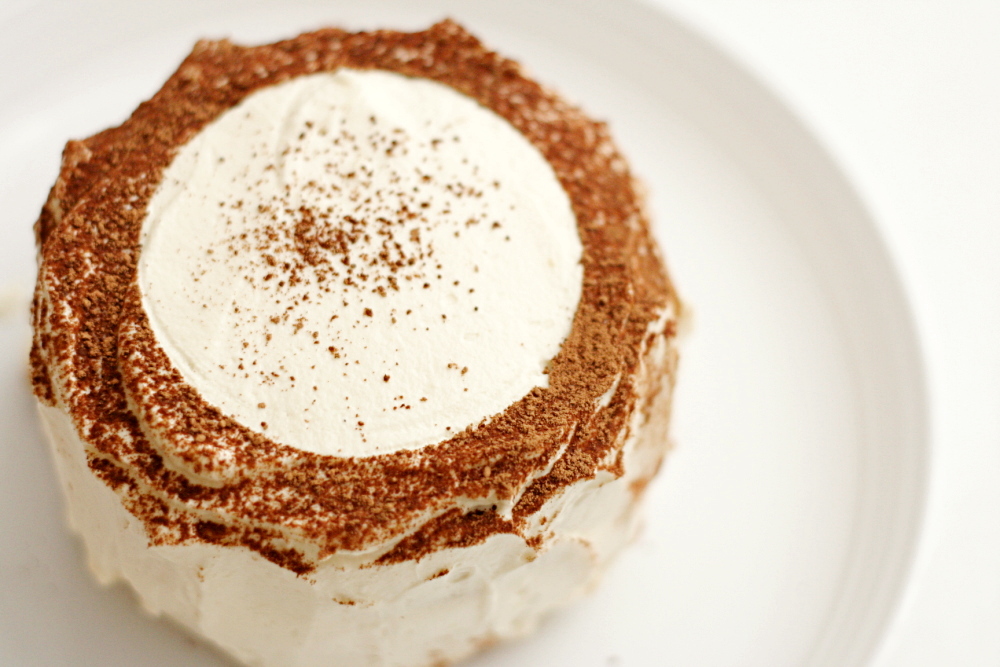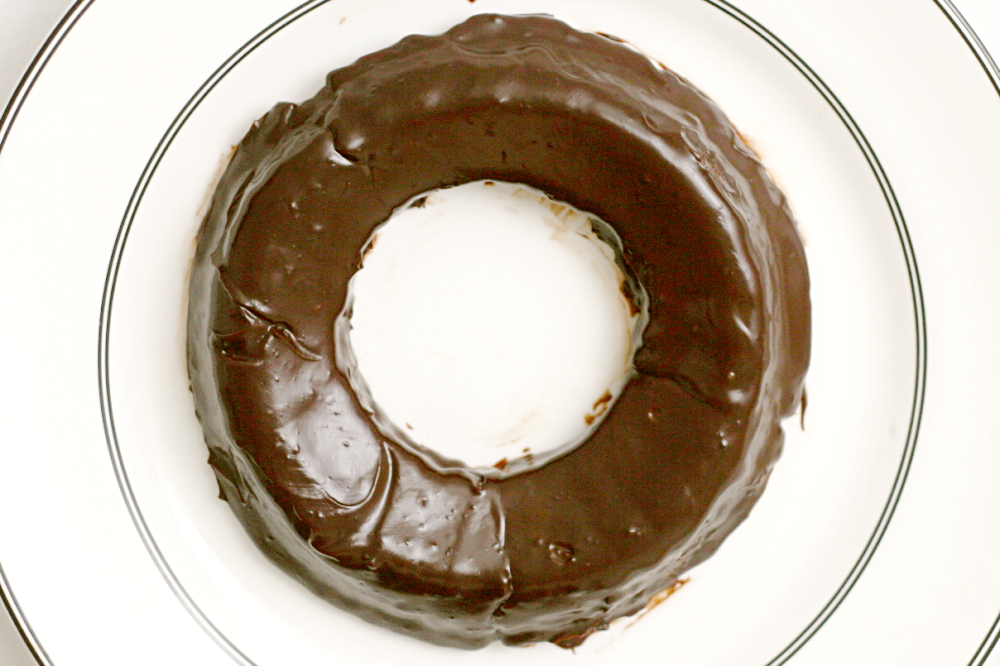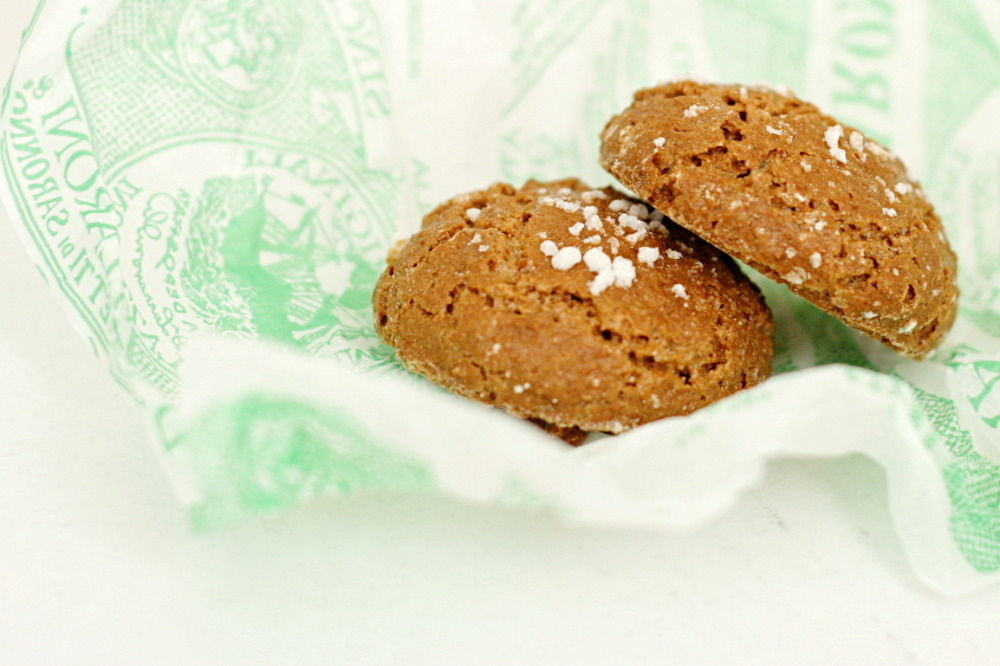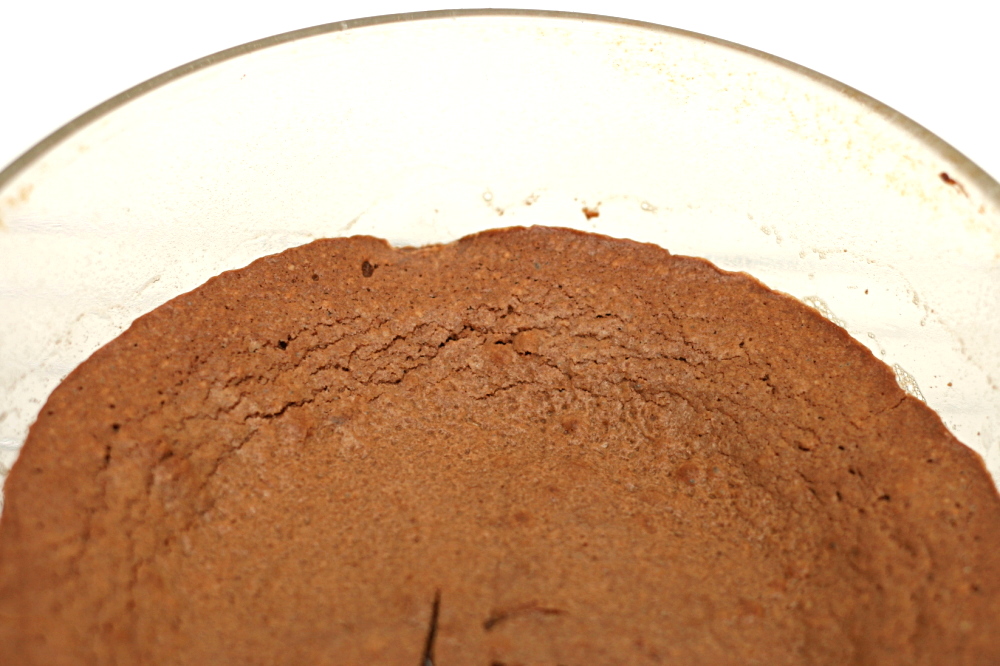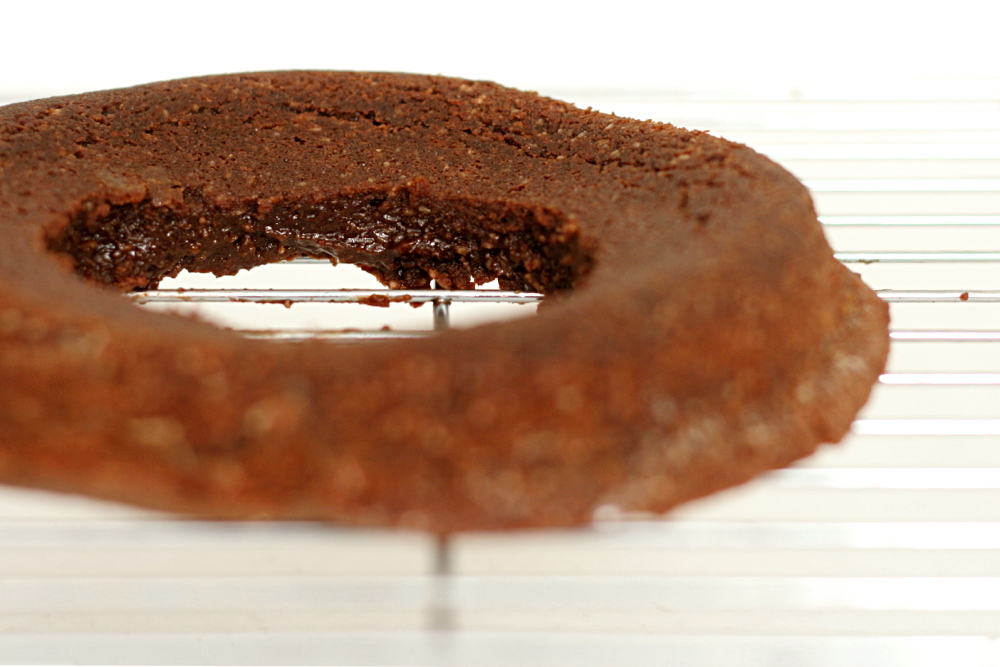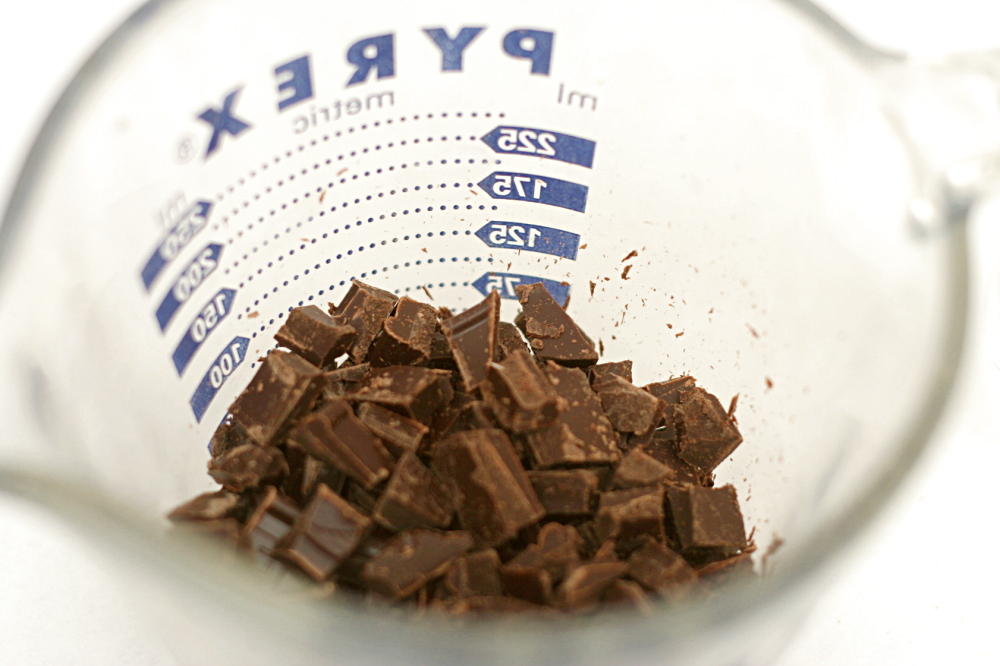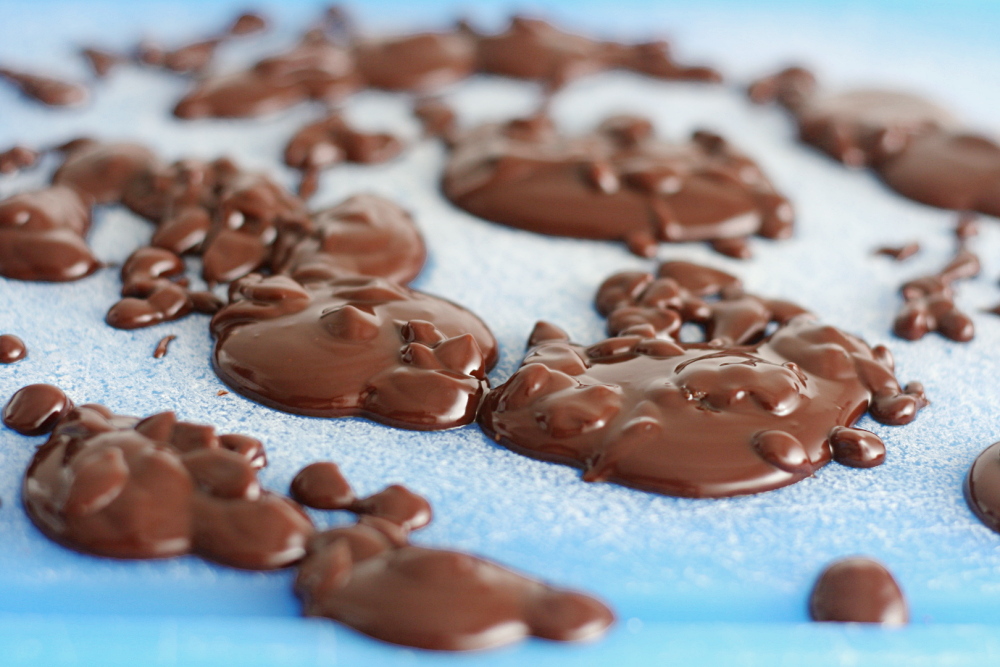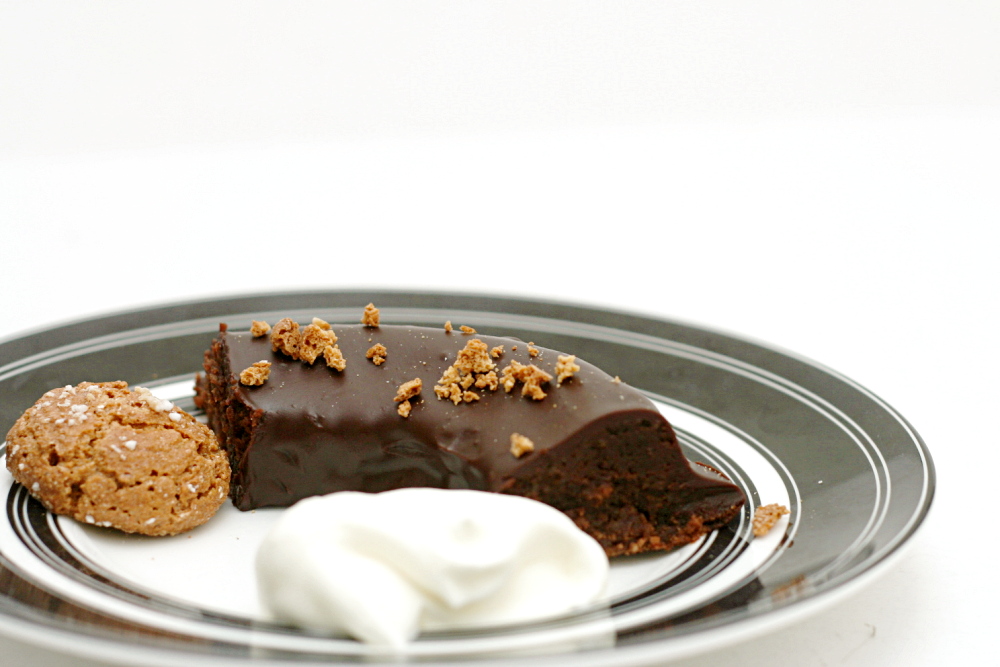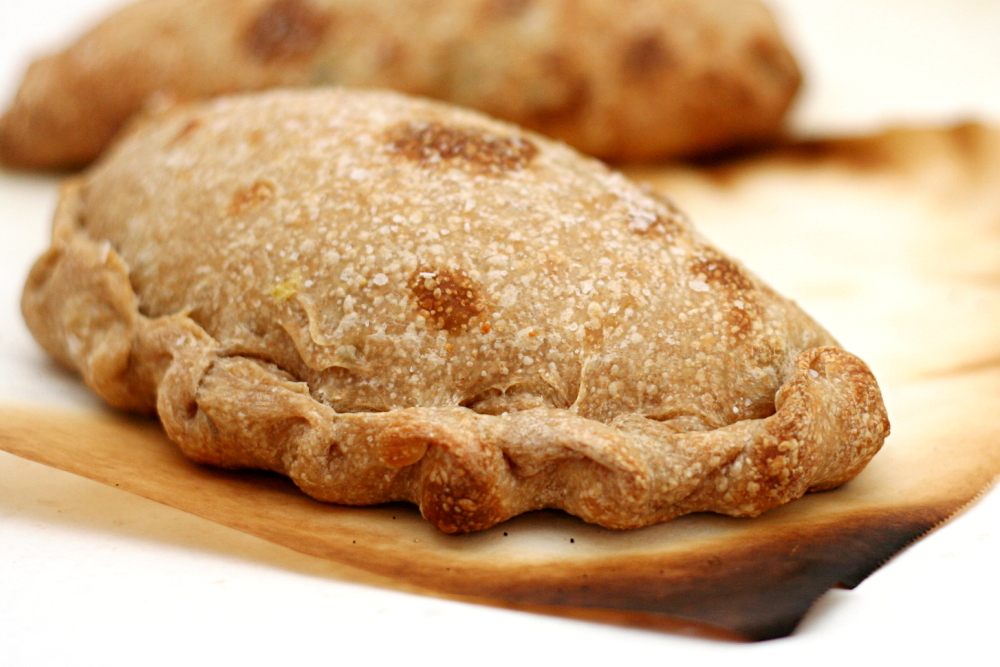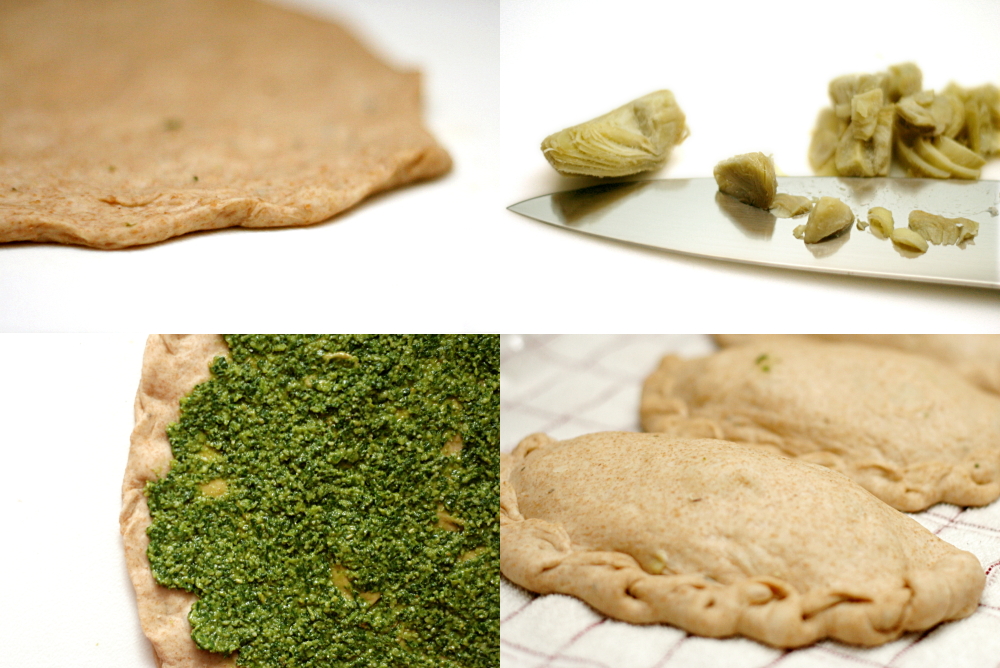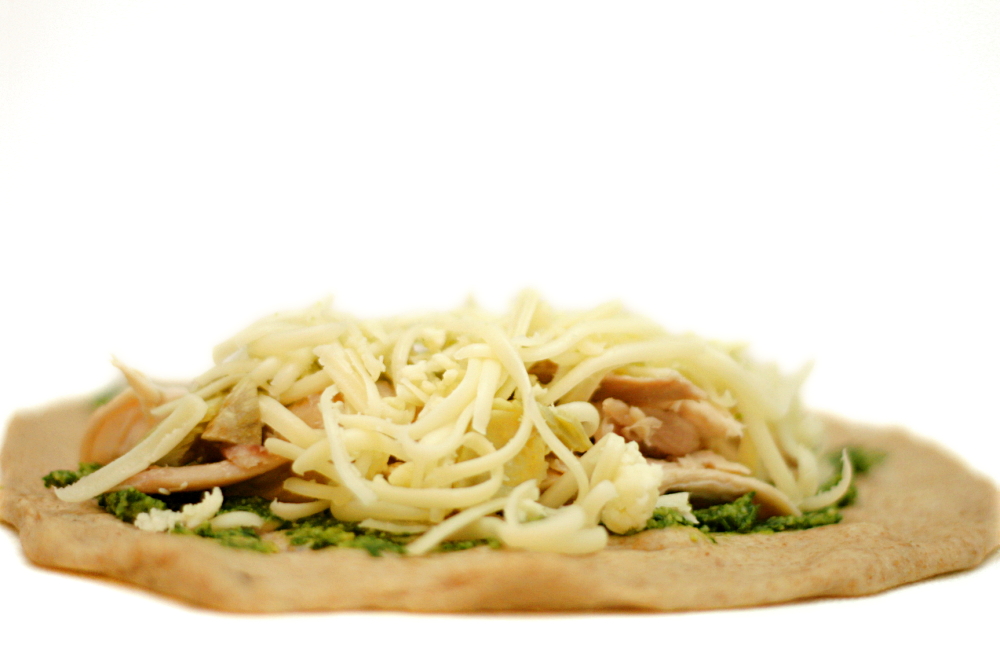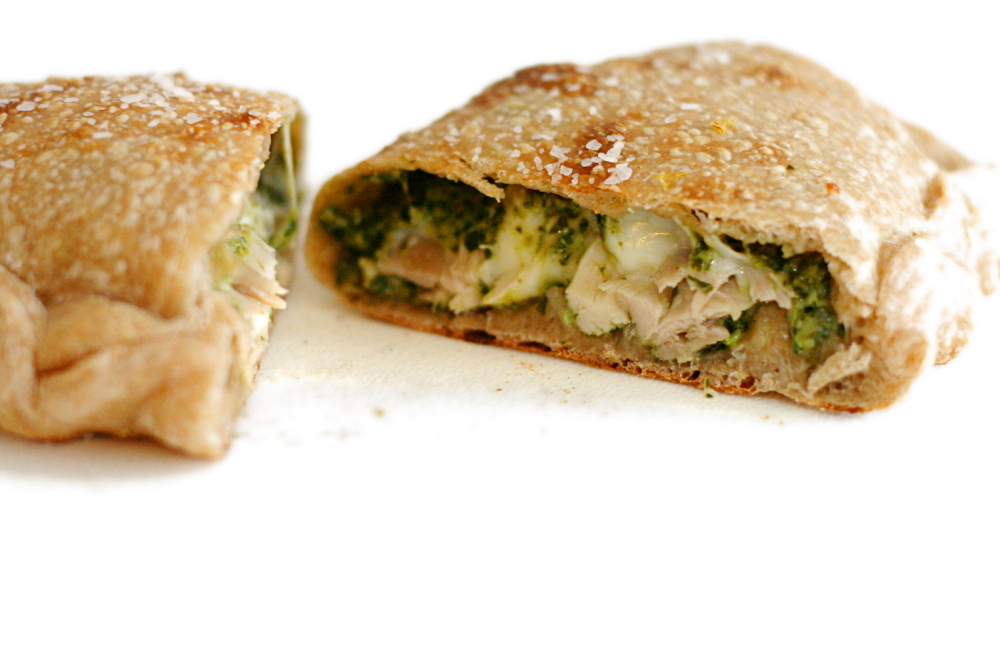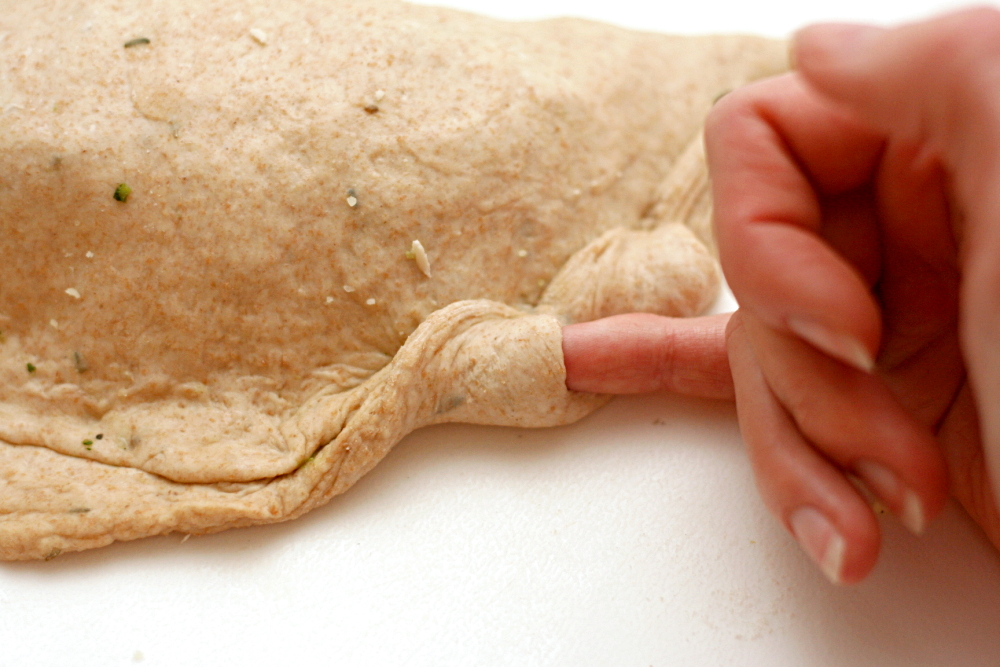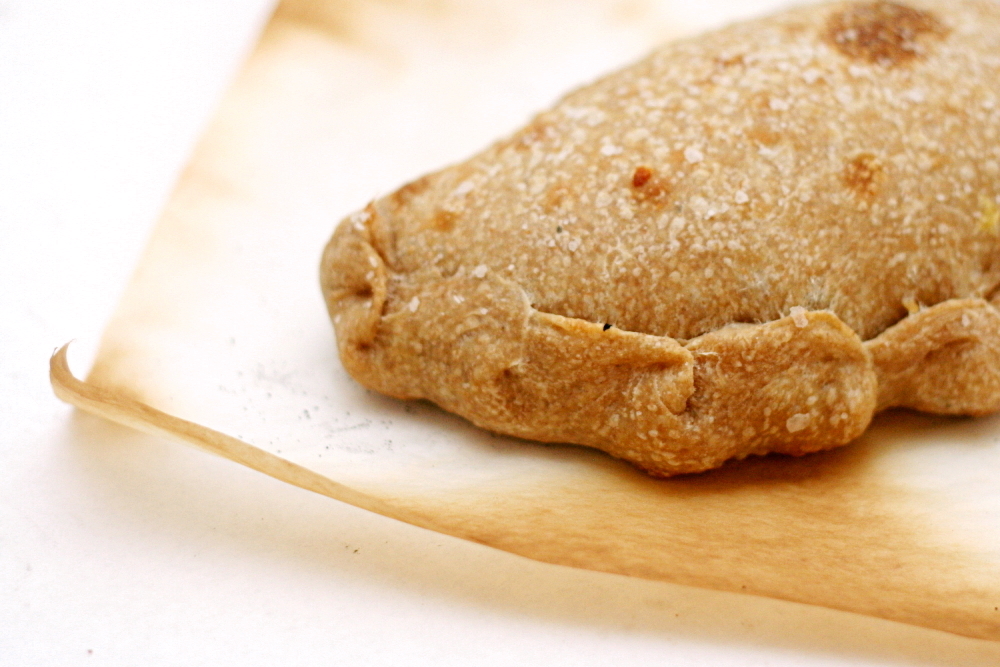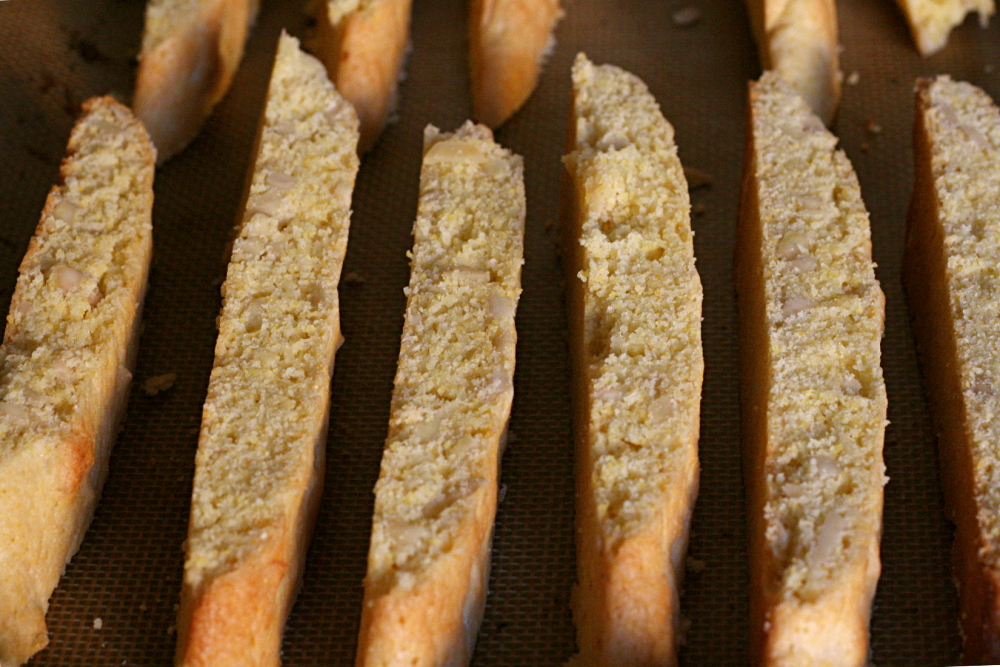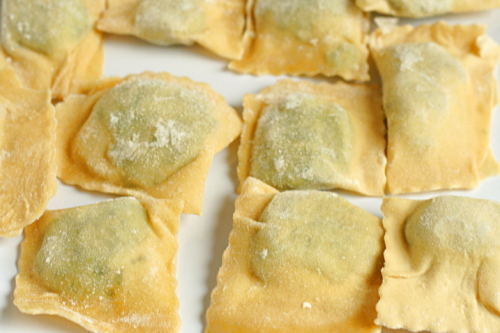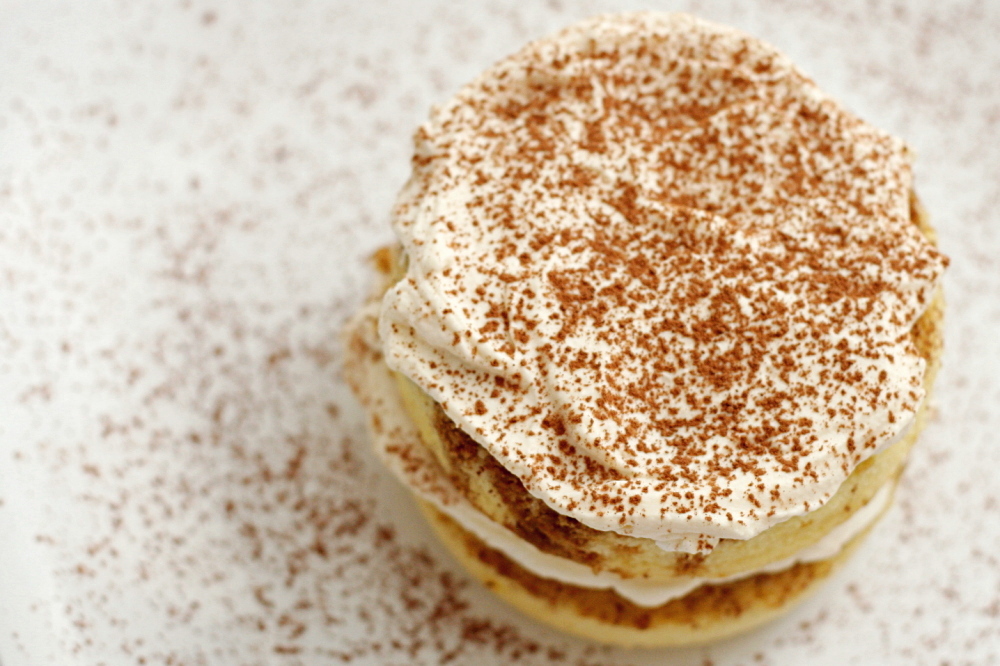
I would be curious to see a statistical analysis of the Tuesdays with Dorie recipes chosen so far. I figure we’ve made our way through about a third of the book, maybe a little less. But we’ve made 12 out of 18 of the celebration cakes (and that’s not including the Perfect Party Cake, which a good portion of the members made for the Daring Bakers). I also wouldn’t be surprised if a higher proportion of recipes with pictures have been chosen compared to those without.
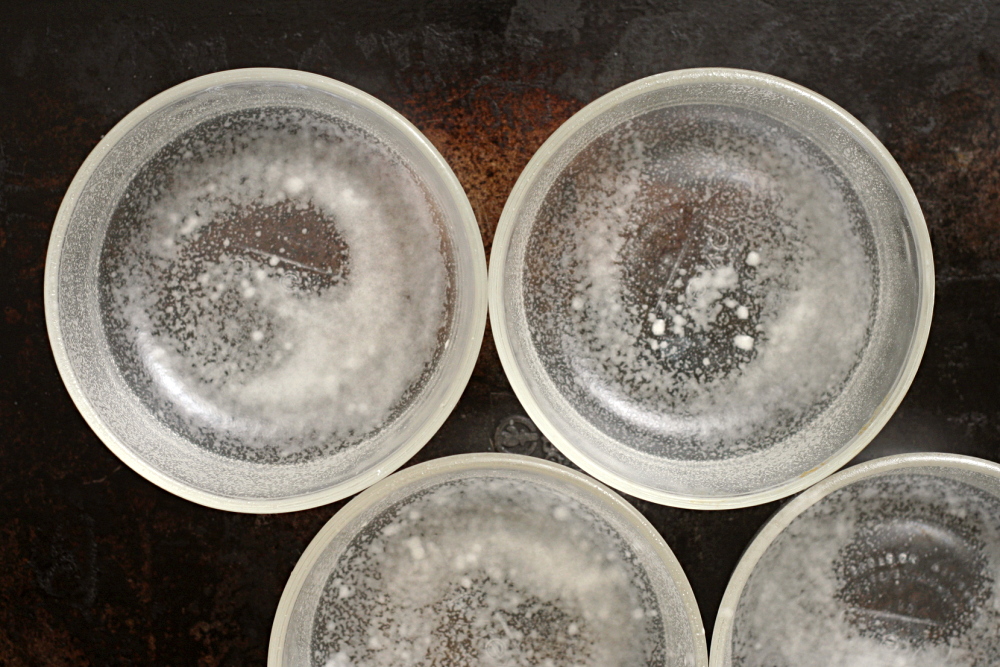
The problem with celebration cakes is that I generally don’t have a celebration for them. Without people to share with, I have to get creative with fractions and pan sizes. This time, I made half of the recipe into two 4-inch round layer cakes.
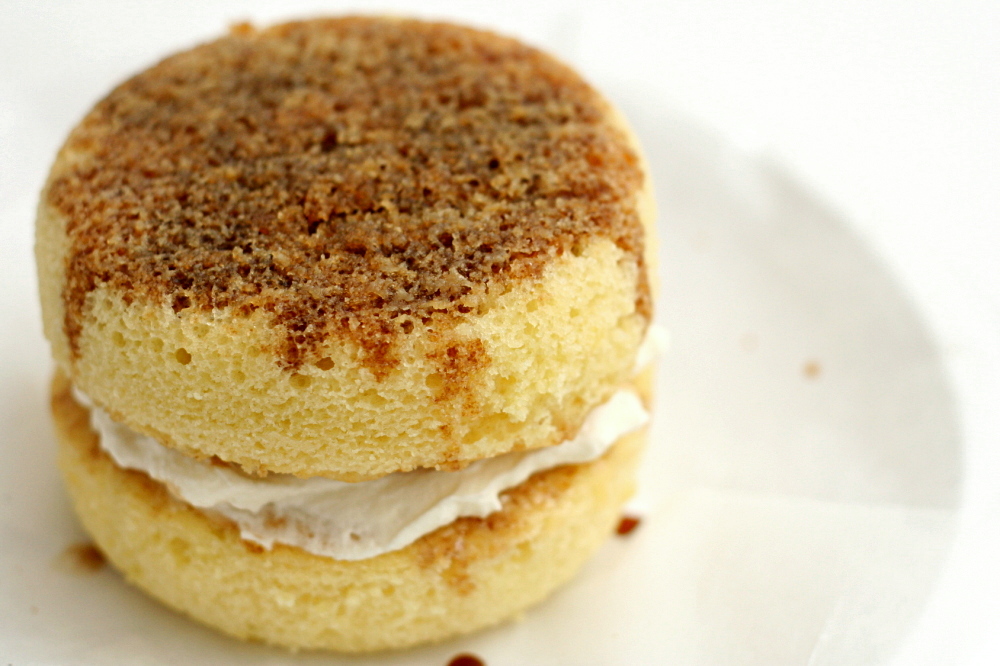
I took some shortcuts here and there. I skipped the chocolate, mostly out of laziness. I used half mascarpone and half cream cheese, because I had bits of both leftover from other things. I know cream cheese isn’t authentic in this, but I honestly just really like cream cheese. Then I added all of the espresso extract to the syrup mixture instead of saving some for the topping because I didn’t read the recipe carefully. And, I didn’t use all of the syrup to soak the cake layers.
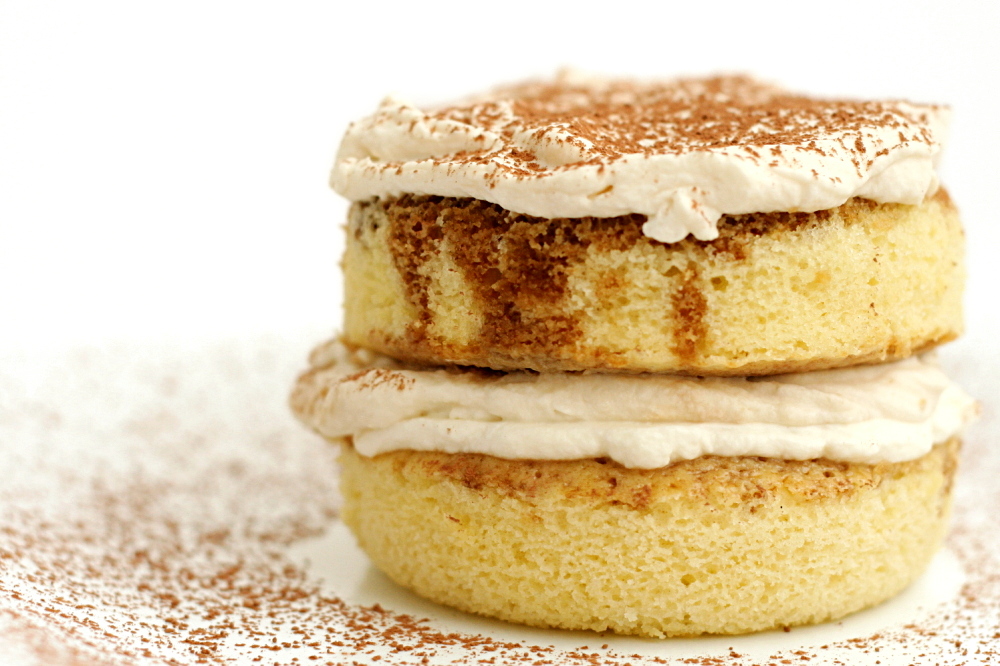
None of those tweaks, save maybe the cream cheese, improved the dessert. That being said, the only one that I really regretted was using less of the coffee mixture than Dorie intended. I was concerned about soggy cake, plus the smooth untrimmed tops of my layers weren’t soaking up much liquid.
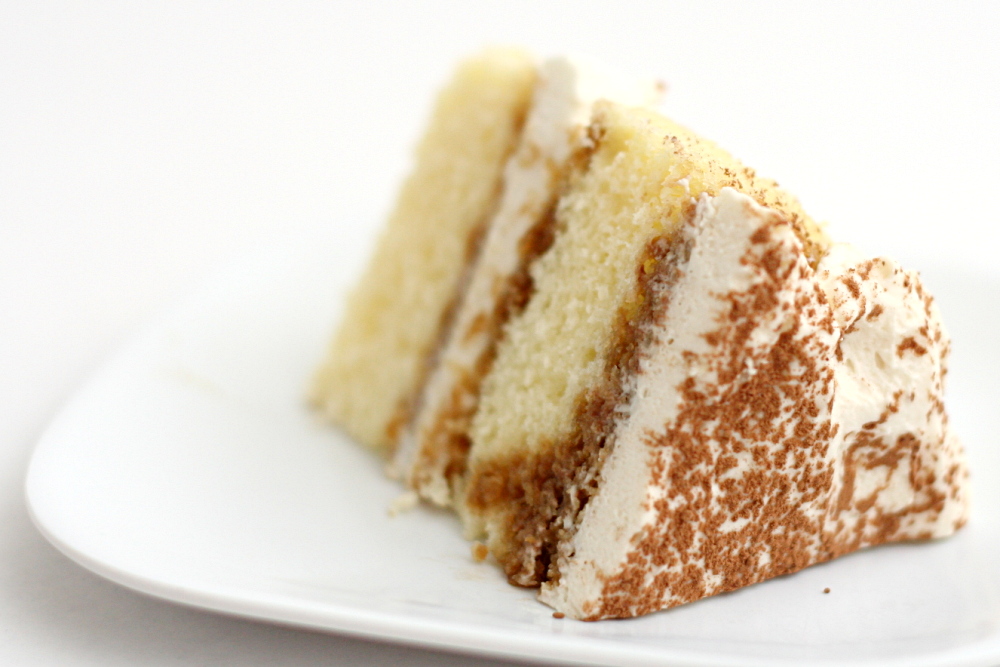
But a little less coffee flavor couldn’t ruin a dessert like this. The cake was light, but sturdy enough to soak up plenty of espresso syrup. The filling was creamy and light and just sweet enough. Everything was accented by bitter coffee and boozy brandy. You shouldn’t wait for a celebration to enjoy cake like this.
Megan has the recipe posted.
One year ago: Double/Triple Chocolate Cookies
